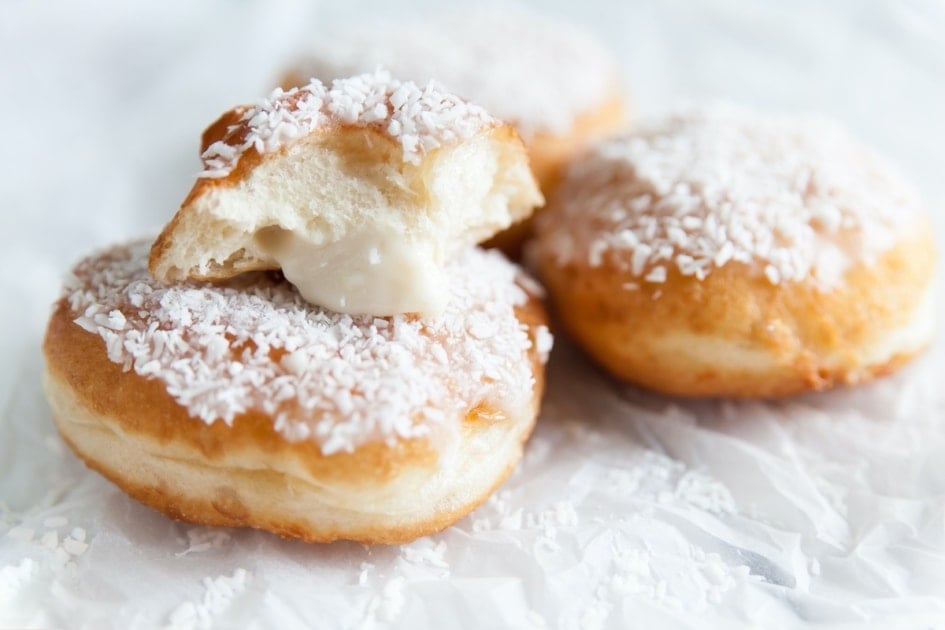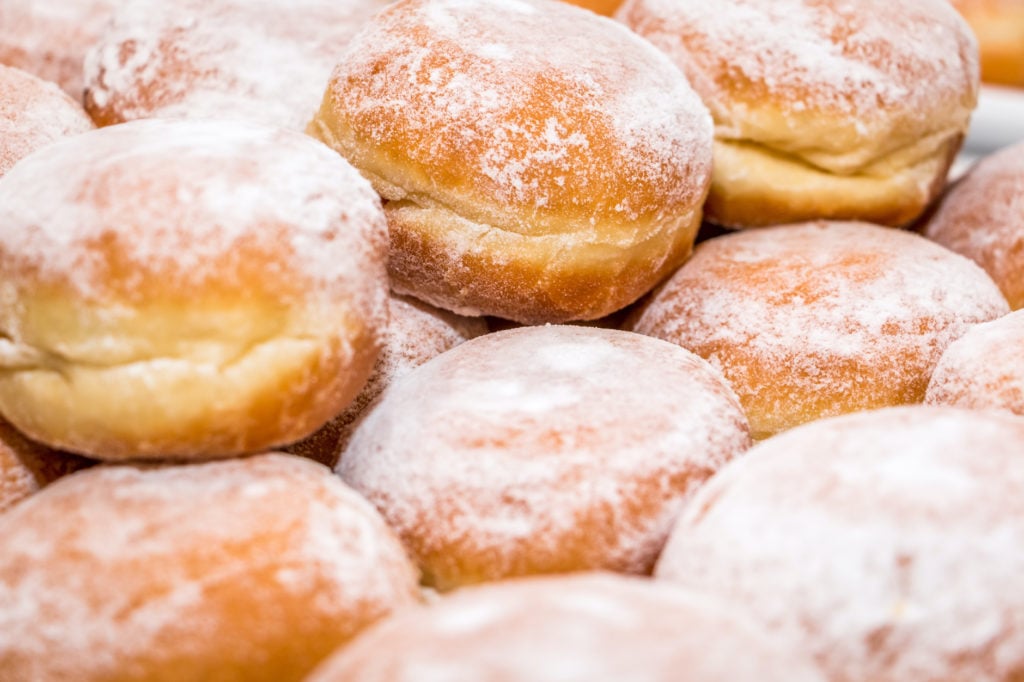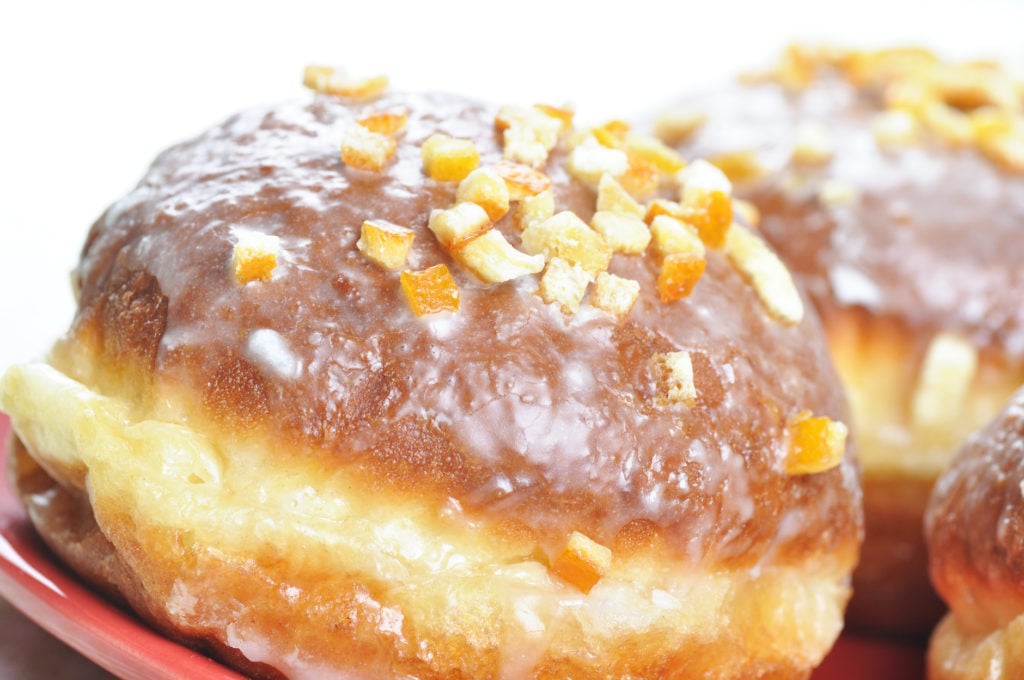Happy Pączki Day! The Skinny On A Fat Tuesday Tradition
National Paçzki Day is celebrated yearly on "Fat Tuesday". Learn more about this indulgent treat.

When Is Pączki Day?
In Poland, this pre-Lenten celebration falls on a Thursday, but in Midwestern cities with heavy Polish influences like Detroit, Cleveland, Green Bay, and Chicago, Pączki Day is always on Fat Tuesday.
National Pączki Day is rapidly approaching, but many may not know what pączki are, let alone why they have their own holiday. National Pączki Day is February 17, 2026, which coincides with Shrove Tuesday or Fat Tuesday (also known as “Mardi Gras”). This is a time for indulging in these fried Polish donuts, which are stuffed with jelly or cream and sprinkled with sugar, as a way to use up sugar, lard, and eggs before Lent begins.
Upcoming Dates:
- February 17, 2026
- February 9, 2027
- February 29, 2028
How Do You Pronounce Pączki?

First, you’re probably wondering how to pronounce pączki, which does not look like it sounds: it’s pronounced “POONCH-key” or “POWNCH-key” (although we’re bound to get emails telling us the correct pronunciation). Practice it a few times so when you’re ready to order one from your local bakery, you’ll know what to ask for. Or if you’re feeling adventurous, you can make them yourself! See the authentic recipe below.
Fun Fact: Paczki is the plural usage. Each donut is a paczek, pronounced POON-check)
It All Starts With Lent
For Christians, Lent is a time for penitence and self-reflection. Beginning with Ash Wednesday (the day after Fat Tuesday), it continues up until Easter. In a spiritual fast, such as during Lent, the purpose is to show restraint and self-control, so people may give up certain foods or activities for the forty-day period; the idea being that without distractions, they are better able to concentrate on God.
Traditionally, only simple foods are to be eaten during Lent, and rich ingredients such as eggs, sugar, and lard must be used up before the fast begins. This is why so many decadent treats are traditionally eaten at this time.
A Little Pączki History
The first records of pączki were noted in the Middle Ages, but at that time, these pastries were savory rather than sweet. It was King Augustus III of Poland who, to celebrate Shrove Week, or Shroven Tide, brought in French pastry chefs, known for their sweet and indulgent desserts, to his castle, where they created the sweet variation of pączki that we know and love today.

As with all dishes, there are many variations of pączki. Some chefs add a small amount of grain alcohol to the dough, which prevents it from getting greasy, but most of the variations lie with the filling. Today, you’ll find fruit jelly (raspberry, apple, and lemon), custard, and even Nutella at the center of most pączki.
Fun Fact: Pączki are often filled with prune filling because the idea was to “cleanse” before Lent!

Traditional Pączki Recipe
Ingredients:
- 4 cups all-purpose flour
- ½ teaspoon salt
- 1 cup whole milk
- 1 packet active dry yeast
- ½ cup granulated sugar
- 4 tablespoons unsalted butter, warmed to room temperature
- 2 large eggs
- 3 egg yolks
- 1 teaspoon vanilla extract
For the filling and glaze, you’ll need:
- 1 ½ cups jam or jelly
- 1/3 cup confectioner’s sugar
- 1 tablespoon whole milk
Instructions:
- Use a whisk and mix flour and salt in a medium bowl before setting aside. Using a microwave, heat the milk slightly, to between 110-115 degrees F. Add the yeast and a tablespoon of granulated sugar. Stir, and leave the mixture for 8-10 minutes to activate the yeast.
- In the bowl of a stand mixer, cream the butter and the rest of the granulated sugar together, on medium-high speed, until they’re light and fluffy. Add the whole eggs and blend well before adding the egg yolks and vanilla. Mix again for one minute.
- Add the flour mixture, alternating with the yeast mixture. Once the dough has formed, use the kneading hook to combine until the dough is slack and sticking to the sides of the bowl slightly, but not too sticky to work with.
- Next, knead dough by hand on flour-dusted surface, forming a smooth ball by tucking the dough under itself. Transfer the dough to a large bowl, cover it with a towel, and leave it to rise and double in size.
- Roll out the dough to ½ inch thickness on a floured surface, then cut into 3-inch circles and place on a cookie sheet. Let the dough circles rise and double in size.
- Heat oil to 350 degrees F. Dust off any excess flour on their surface, and fry the pączki in batches of 3 to 4 until they’re golden brown on each side. Once done, transfer them to a paper towel-lined baking sheet and let it rest till cool enough to handle.
- Place the filling in a pastry bag with a small round tip, and then poke a hole in the middle of each donut using a thick skewer or chopstick. Take care not to poke all the way through.
- Use the pastry bag to fill the pączki, then glaze them by whisking together the confectioner’s sugar and milk (or simply dust them with powdered sugar). Aim for the consistency of maple syrup when creating the glaze.
- Dip the doughnuts into the glaze before letting them rest. Then eat and enjoy!

Amber Kanuckel
Amber Kanuckel is a freelance writer from rural Ohio who loves all things outdoors. She specializes in home, garden, environmental, and green living topics.






Thank you! So many memories with my Grandma. We all looked forward to having these but with no filling just rolled in cinnamon & sugar. Mmmmmmmmsooooooooo good!
Glad you enjoyed the article! And memories.
Sounds a lot like a Kolache!
Now that you say that, they do! We had some in Texas (Kolache) and boy they were tasty!